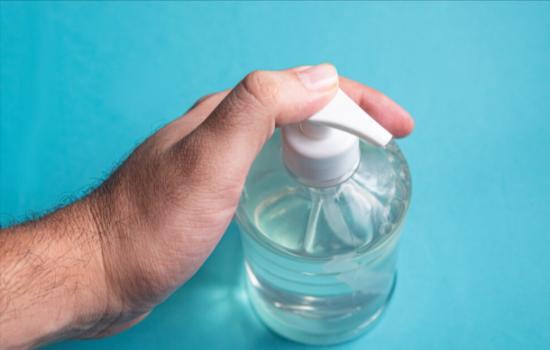Rubbing Alcohol for Toenail Fungus: A Simple Solution or Myth?
Contents

Toenail fungus, medically known as onychomycosis, can be a stubborn condition that affects millions of people worldwide. It’s characterized by thickened, discolored nails that may become brittle or even crumble.
While there are numerous treatment options available, many individuals are turning to household remedies, such as rubbing alcohol, to help combat toenail fungus. But is rubbing alcohol an effective solution?
In this post, we’ll explore this remedy in-depth, examining its potential benefits, limitations, and how to use it safely.
What Is Rubbing Alcohol?
Rubbing alcohol, or isopropyl alcohol, is a common antiseptic found in most households. It’s often used for disinfecting wounds, cleaning surfaces, and even removing stains.
It’s a versatile solution with properties that can kill bacteria, viruses, and fungi when used correctly. But when it comes to treating toenail fungus, the question remains: Does it work?
How does Toenail Fungus develop?
Before we dive into the potential of rubbing alcohol, it’s important to understand how toenail fungus develops.
Fungal infections thrive in warm, moist environments, which makes your feet especially if they’re often confined in shoes an ideal breeding ground.
Factors like poor hygiene, sweaty feet, nail trauma, or even sharing public spaces like gym showers can increase the risk of developing toenail fungus.
Can Rubbing Alcohol Treat Toenail Fungus?
Rubbing alcohol is widely known for its antimicrobial properties. When applied to the skin or nails, it can kill various microorganisms, including bacteria and fungi.
Some people claim that rubbing alcohol helps to dry out the infected nail, creating an environment where the fungus cannot thrive.
But while rubbing alcohol might have a drying effect, it’s essential to understand that its ability to completely eradicate toenail fungus is still debated.
Limited Fungicidal Action
- While rubbing alcohol can kill some fungi on contact, it’s not a comprehensive antifungal treatment. Toenail fungus can often be more resilient, requiring a more potent, specialized antifungal agent for full eradication.
Surface-Level Treatment
- Rubbing alcohol may be effective on the surface of the nail or surrounding skin, but it may not penetrate deeply enough into the nail bed, where the fungus resides, to fully treat the infection.
No Long-Term Cure
- Even if rubbing alcohol appears to improve the appearance of the infected nail temporarily, it does not address the root cause of the fungus, which may lead to a recurrence.
Benefits of Using Rubbing Alcohol for Toenail Fungus
Although rubbing alcohol may not be a cure-all, it can still provide some benefits in managing toenail fungus:
- Cleans the Nail Bed: Alcohol can help cleanse the nail area, removing dirt, debris, and some of the fungus on the surface.
- Drying Effect: The drying nature of rubbing alcohol can reduce the moisture that fungi thrive on, potentially slowing down their growth.
- Antiseptic Properties: It can help prevent secondary bacterial infections from developing around the nail area, especially if there is any breakage or irritation.
How to Use Rubbing Alcohol for Toenail Fungus?
If you decide to try rubbing alcohol for toenail fungus, it’s crucial to use it correctly to avoid irritation or further complications.
- Clean the Affected Area: Wash your feet thoroughly and dry them completely. Clean the nail and surrounding skin to ensure the rubbing alcohol is applied to a clean surface.
- Apply Rubbing Alcohol: Pour a small amount of rubbing alcohol onto a cotton ball or pad and gently rub it onto the infected toenail and surrounding skin. Be careful not to apply excessive pressure, especially if the nail is brittle or cracked.
- Let It Dry: Allow the alcohol to air dry before putting socks or shoes on.
- Repeat Regularly: For the best results, apply rubbing alcohol to the affected nail once or twice a day. However, monitor your skin for signs of irritation.
Alternative Treatments for Toenail Fungus
If rubbing alcohol doesn’t seem to work, several other treatments may help
- Over-the-Counter Antifungal Creams: Products containing terbinafine or clotrimazole can be applied to the infected area to combat the fungus.
- Prescription Medications: Doctors may prescribe oral antifungal medications like terbinafine or itraconazole for more serious infections.
- Laser Treatment: Some individuals opt for laser therapy to treat stubborn toenail fungus.
- Natural Remedies: Tea tree oil, vinegar, and garlic have all been suggested as potential home remedies, though their effectiveness varies.
Final Thoughts
Rubbing alcohol may help with the management of toenail fungus by cleansing the area and drying it out, but it’s unlikely to be a complete cure.
While it’s an easy-to-access solution, its antifungal properties are not as potent as specialized treatments.
If you’re struggling with toenail fungus, it’s essential to consider all treatment options and consult a healthcare professional for the best course of action.
At In My Bowl, we believe in providing accurate, helpful advice for all kinds of health concerns, so don’t hesitate to explore other potential remedies for toenail fungus. With the right approach, you can achieve healthier, fungus-free nails!



